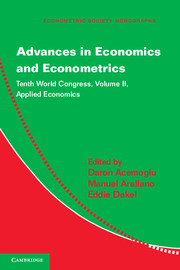Book contents
- Frontmatter
- Contents
- Contributors
- Preface
- I FINANCE
- II POLITICAL ECONOMY
- III MACROECONOMICS
- IV TRADE AND FIRM DYNAMICS
- V GROWTH
- VI FRISCH LECTURE
- VII PERSPECTIVES ON CHINESE ECONOMIC GROWTH
- 12 The China Miracle Demystified
- 13 Is Precocious Export Sophistication a Source of China's Growth Success? Computing the Share of Domestic Value Added in Exports When Processing Trade Is Prevalent
- 14 Perspectives on China's Economic Growth
- Name Index
- Miscellaneous Endmatter
13 - Is Precocious Export Sophistication a Source of China's Growth Success? Computing the Share of Domestic Value Added in Exports When Processing Trade Is Prevalent
Published online by Cambridge University Press: 05 May 2013
- Frontmatter
- Contents
- Contributors
- Preface
- I FINANCE
- II POLITICAL ECONOMY
- III MACROECONOMICS
- IV TRADE AND FIRM DYNAMICS
- V GROWTH
- VI FRISCH LECTURE
- VII PERSPECTIVES ON CHINESE ECONOMIC GROWTH
- 12 The China Miracle Demystified
- 13 Is Precocious Export Sophistication a Source of China's Growth Success? Computing the Share of Domestic Value Added in Exports When Processing Trade Is Prevalent
- 14 Perspectives on China's Economic Growth
- Name Index
- Miscellaneous Endmatter
Summary
Introduction
In understanding the sources of China's growth success, one theory is that the Chinese government's active and successful promotion of industrial upgrading, rather than passively waiting for market-determined natural evolution of its comparative advantage, is a key for its sustained high growth rates. One possible market failure that could justify government promotion of industrial upgrading is the externality of discovering a country's latent comparative advantage. If the benefits of the discovery are not accrued fully to the firms that make the initial investment in the costly discovery, then private firms generally underinvest in the discovery process (Hausmann and Rodrik 2003). As a result, the natural evolution of a country's comparative advantage may be too slow. Other types of market failure also could justify a role for the government in promoting structural upgrading that would make a country's industrial composition appear precocious relative to its current income level or factor endowment.
A popular measure of precocious industrial structure is the difference between a country's actual export bundle relative to the expected mix based on its income or factor endowment. By this measure, China's export structure appears precociously advanced. Across countries, Rodrik (2006) and Hausmann et al. (2007) reported that those countries with a more precocious export structure tend to grow faster – and China is simply an illustration of this. Schott (2008) documented an apparent rapid increase in the similarity between the People's Republic of China (PRC)'s export structure and that of high-income countries and interpreted it as evidence of a rise in the level of sophistication embedded in the country's exports.
Information
- Type
- Chapter
- Information
- Advances in Economics and EconometricsTenth World Congress, pp. 519 - 531Publisher: Cambridge University PressPrint publication year: 2013
